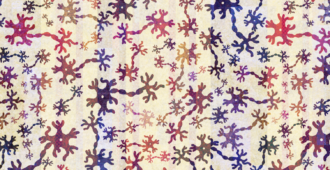Plenary speaker Dr Massimo Filippi put this question to delegates on the second day of the 24th International Symposium on ALS/MND.
Opening the session on neuroimaging, Dr Filippi gave an excellent review on what we currently know about this area of research, and ultimately answering whether or not we can see more clearly in MND?

It’s all in your head – Magnetic Resonance Imaging (MRI)
Over the past ten years there have been significant advances in the identification of neuroimaging patterns in MND. Dr Filippi focused mainly on the use of MRI neuroimaging (a technique used to visualise changes in the brain). He stated: “Through the use of MRI we have been able to detect cortical thickness of the Cerebral cortex (the outermost layer of the brain), which is significantly reduced in MND”.
Other areas of the brain that are affected in MND are the frontal and temporal lobes. The frontal lobe is located on the front part of the brain and is primarily involved in our behaviour and personality. The temporal lobes are situated on either side of the brain (near our ‘temples’) controlling our language and emotions.
Dr Filippi said: “With neuroimaging we are able to detect slight changes in the brain well before the clinical signs and symptoms appear.”
Referencing a number of recent publications, including MND Association-funded researcher Dr Martin Turner (University of Oxford), Dr Filippi explained that neuroimaging has helped identify changes in the structure and connectivity of the Corpus callosum (an area which connects the left side of the brain to the right).

Looking beyond the white matter
Recent advances in MND research have seen the discovery of C9orf72 as the most common cause of the rare inherited form of MND (5-10% of total MND cases). Dr Peter Bede presented research collected from the brain images of these individuals.
During his presentation he highlighted that significant changes occurred to the frontal and temporal lobes of people living with MND who had the C9orf72 gene, compared to those without.
The room was buzzing with questions and the audience expressed that this was “excellent research” with the final questioner asking rhetorically: “Is there anything in the brain not affected by C9orf72?” due to Dr Bede’s research highlighting that the orbitofrontal, bilateral and operculum lobes were also affected.
Young talent on the platform
The symposium showcases the best MND research from around the world. Leading experts present alongside young, upcoming stars, which is exactly what happened when Ms Emma Devenney took to the stage.

Funded by the Association, it was great to see a PhD student present their work on the platform. Ms Devenney expressed the importance on early identification of people living with MND and frontotemporal dementia (FTD) from those with MND alone. She said: “The aim of my research was to develop a simple visual MRI atrophy rating scale to differentiate MND from MND with FTD.”
Cognitive and behavioural changes are increasingly common in MND and a small proportion of people living with MND display features of FTD. FTD is caused by progressive degeneration in the brain’s frontal and temporal lobes and has an earlier age of onset compared to other forms of dementia (such as Alzheimer’s).
For more information on cognitive change see our care information sheet.
Ms Devenney identified, like Dr Bede, the obitofrontal cortex. But, her research highlighted early damage in this region of the brain from individuals with FTD compared to those with MND alone. She also identified changes in other areas of the brain, including the anterior temporal lobe.
Speaking during her presentation she said: “We have identified a number of regions in the brain that have the potential to differentiate between MND alone and MND with FTD. This simple tool could potentially lead to identification and diagnosis of this group of people living with both MND and FTD, enabling them to gain earlier access to the appropriate care.”

What our researchers are saying:
Dr Turner (who is attending this year’s symposium) commented on the neuroimaging session in advance of the meeting:
“Ten years ago there were only a few of us who thought the brain might be very important in MND, through demonstrating changes on brain scans and in cognitive processes.
“Enormous advances in MRI mean that we can now perform detailed studies without needing to put the brain under a microscope. The Neuroimaging Society in ALS (NISALS) that I set up in 2010 will have its 4th meeting this year just after the symposium, with another exciting programme showcasing cutting edge techniques and the promise of a greater understanding of brain function as a result.”
Seeing clearly
So, can we see more clearly? Dr Filippi summarised: “By using neuroimaging we can see things in the brain that the pathologist can’t. Therefore in answer to the question – as Barack Obama would say – yes we can!”
After you’ve finished reading the symposium articles that interest you, we’d be grateful if you could spare a few minutes to fill in our short online survey on our symposium reporting. Your comments really are useful and allow us to continually improve our symposium reporting https://www.surveymonkey.com/s/CPH8XF6.






Comments are closed.